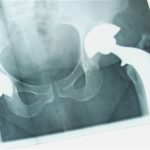The numbers are alarming. One in 88 children born in the U.S.A have autism.
Now, thousands of families impacted by the disorder are hoping their own stem cells from cord blood can reverse the impact of autism.
“This initial pilot study will accept 30 children who have autism not caused by a genetic factor,” said Heather Brown with Cord Blood Registry.
Those children will receive infusions of their own stem cells, which they can’t reject. They were collected in their cord blood, banked when they were newborns and stored with the registry. The theory is the stem cells participants receive will be able to regulate their immune systems and stimulate neurological repair.
“Stem cells may have the ability to regulate the immune system or they may regulate the nervous system,” Brown said.
The hope is the new stem cells, from one’s own body, that have not been exposed to infection or chemicals, will be able to get patients bodies to rev up their own ability to repair damage.
Autism patients in other countries have been injected with their own cord blood stem cells and reported major improvements in their neurological function.
Watch the video below to hear more.






